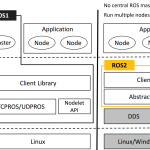
ABOUT ME
Hi, I am Dr. Hang Cui, a robotics engineer at Gatik AI Inc. Previously, I worked as a software engineer at the Center for Autonomy at the University of Illinois Urbana-Champaign.
Contact: Email
PROFICIENT IN
- Real-time Embedded MCUs and Linux Systems
- Perception and Signal Processing for Automotive 4D Imaging Radar
- Hardware and Software Integration for AI Platforms
BLOG LINKS
Communication Interfaces
TI C2000 Real-time MCU
STM32 MCU with FreeRTOS
Yocto Project on Raspeberry Pi
-
QUICK LINKS
Hobbies
Resources
Applications
SELF-HOSTED APPS
Gitea & CI Runner
Daily Notes
Brainstorm Mapping
Shared Markdown Notes
Bookmark Management
Project Management
Document Management
eBook Management
n8n AI Workflow Automation
-
RECENT POST
VISITOR MAP
Exploratory Review of AI Concepts and Tools
AI Concepts LLM typically refers to Large Language Model in the context of artificial intelligence and machine learning.It is a type of deep learning model trained on massive amounts of text data to understand and generate human-like language. Examples: GPT-4, … Continue reading
More Galleries
Comments Off on Exploratory Review of AI Concepts and Tools
Comparison of ROS1 and ROS2
This gallery contains 2 photos.
ROS1 vs ROS2 Architecture ROS2 is well-suited for a variety of applications, including navigation, security, embedded systems, real-time operations, safety-critical tasks, and robotic manipulation. Data Distribution Service (DDS) for ROS2 (1) An industry-standard communication system, a networking middleware (2) Data-Centric … Continue reading
More Galleries
Comments Off on Comparison of ROS1 and ROS2


